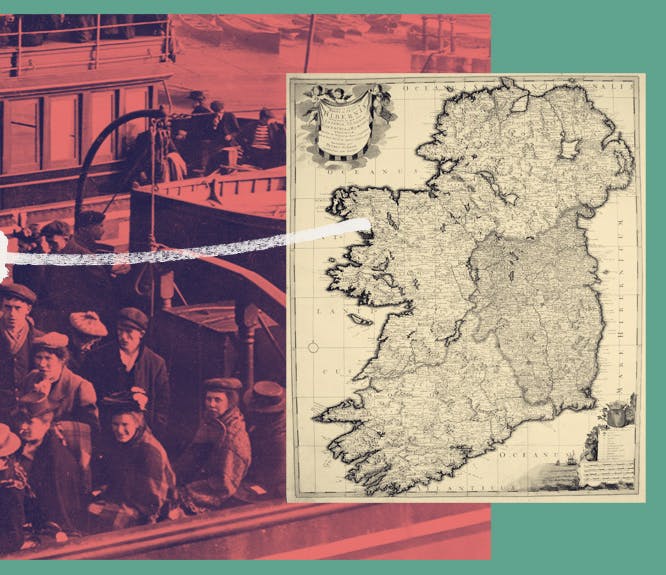The immigrant ancestors who changed their minds
2-3 minute read
By The Findmypast Team | May 13, 2016

""I came to America because I heard the streets were paved with gold. When I got here, I found out three things: first, the streets weren't paved with gold; second, they weren't paved at all; and third, I was expected to pave them."
This well known quote, purportedly said by an Italian immigrant to America, reminds us that life in the new world wasn't easy for our ancestors.
We know how mightily they struggled, and most stories focus on immigrants overcoming these burdens to make a better life for future generations. However, not everyone succeeded or even wanted to stay.
Believe it or not, many immigrants did in fact go back to their home country. Some returned after a very short period of time, while others stayed for stayed for years, decades or even most of their life before deciding to go back.
When trying to trace the journies of our immigrant ancestors, this fact is something we should keep in mind - it may provide a solution to a genealogical mystery, and can help your refine when and where to search for your ancestors.
What nationality was the most likely to return?
There isn't any data that conclusively captures the number of immigrants who decided America wasn't for them and returned home. However, there are a few studies to draw samples from, along with plenty of estimates. And the statistics reveal some interesting trends in American immigration history.
There are a few difficulties in estimating this number. As technology improved, transatlantic travel became easier, safer and more affordable. Naturally, members of the foreign-born population began traveling back in greater numbers but it wasn't necessarily because they were permanently leaving. Many went back for visits, business or special occasions, and records do not capture whether their departure was intended to be permanent or not.
Additionally, the US did not keep track of departing passengers until 1908, so our best samples come only after this period.

Library of Congress, Prints & Photographs Divison
That being said, a report on data from 1908 shows that the most common nationalities that went home were Italians, Eastern Europeans (Croatians, Slovaks, Hungarians, Slovenians, Serbians and Bulgarians). This highlights an interesting aspect of American immigration - many immigrants from southern and eastern Europe were known as "birds of passage." These immigrants would travel to America for a short period, save aggressively, and then move back home to share their earnings with their family.
An earlier estimation claims that throughout the 1880's over 370,000 immigrants, mostly Irish, from the United Kingdom left America. In 1875, almost 50% of German immigrants went home also. This was likely caused by a few factors - the United States suffered severe and frequent economic depressions after the Civil War, and combined with the brutal working conditions immigrants faced, this surely caused many to leave. For the Irish, things were also improving (though far from ideal) in their homeland post-famine, so it became more possible for those who were forced to flee starvation to go home.
Genealogical implications
Keeping this in mind may help you solve some inconsistencies or mysteries in your research. First of all, it may explain why you find your ancestor in multiple passenger lists, sometimes years apart.
This can be an important discovery, because it will help you determine what country to look in during what periods - you may not be able to locate your ancestor before 1850 when they first immigrated, but if they returned at a later date then you have another shot to find them in another country.
Guide table of contents
Related articles recommended for you

'Their hunger will not allow them to continue': the victorious London dockers' strike of 1889
History Hub

We found war veterans and healthcare workers within Keir Starmer's family tree
Discoveries

Taylor Swift’s family tree shines with love, heartbreak and the triumph of the human spirit
Discoveries

